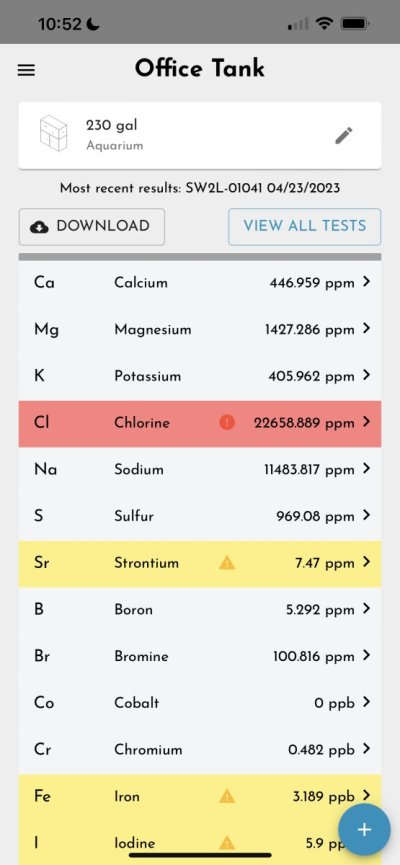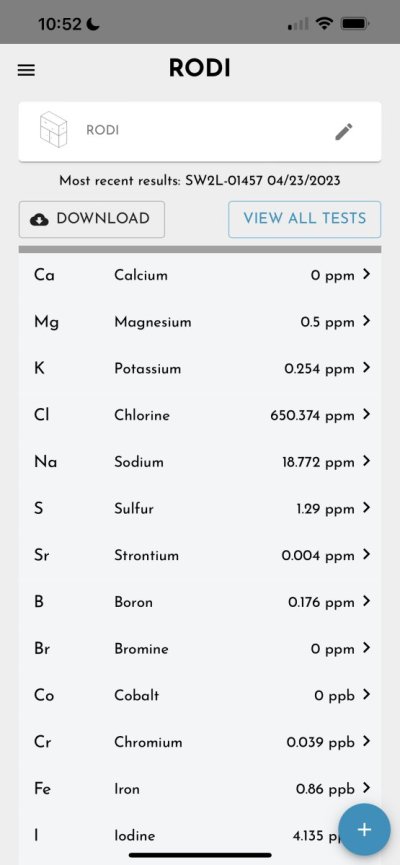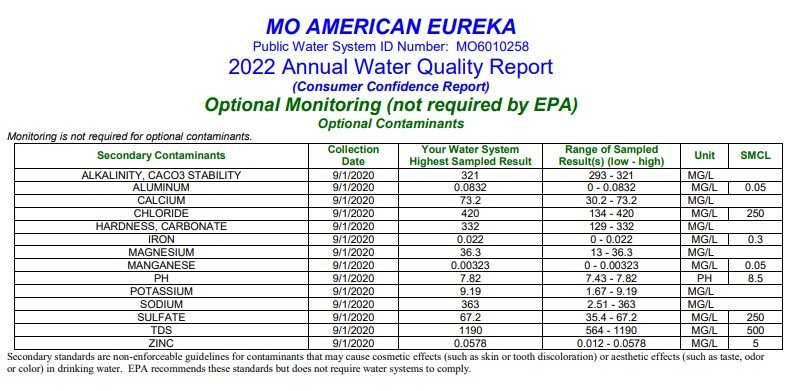Hello All,
I have a 2 and a half year old reef tank with 230 gallons. It's a mix between LPS and SPS - though to date I have not had much success with some SPS. All of my parameters are in check for the "standard' checks:
Salinity = 1.026
PH = 8.2 (apex monitor)
Nitrate = 12 (hanna checker)
Phosphate = .05 (hanna checker)
Alkalinity = 8.5 (hanna checker)
Calcium = 440 (salifert test)
I finally sent some samples in for an ICP test as I couldn't for the life of me figure out what was going on with my SPS corals.
I sent a sample of my display tank, and a sample from my RODI water.
The display tank shows Chloride as 22,659 ppm.
My RODI water shows Chloride as 650 ppm.
My LFS thought the main problem was the RODI water, which would make sense as if you remove the 650 ppm from the display, that brings it to 22K, which is still really high, but it's within ICP's range. Right now, I'm currently using a 7 stage RO unit from BRS with 2 carbon blocks. In talking with the LFS and BRS, they both recommended I use ChloraGuard carbon block in place of one of the standard blocks.
The questions I have is what Chloride test can you use to test the Chloride in the water - so you know when to switch out the carbon blocks? I went to Home Depot and got a Chloride test kit for swimming pools, which tests water up to 5 ppm. I would think this test would really show chloride as my RO water has 650 ppm. When I tested the water (from the same RO water that I pulled my ICP test sample from) I'm getting no coloration... meaning 0 chloride. Could it be that the test doesn't test for all "types" of chloride - as in maybe I need to get a chloramine test?


I have a 2 and a half year old reef tank with 230 gallons. It's a mix between LPS and SPS - though to date I have not had much success with some SPS. All of my parameters are in check for the "standard' checks:
Salinity = 1.026
PH = 8.2 (apex monitor)
Nitrate = 12 (hanna checker)
Phosphate = .05 (hanna checker)
Alkalinity = 8.5 (hanna checker)
Calcium = 440 (salifert test)
I finally sent some samples in for an ICP test as I couldn't for the life of me figure out what was going on with my SPS corals.
I sent a sample of my display tank, and a sample from my RODI water.
The display tank shows Chloride as 22,659 ppm.
My RODI water shows Chloride as 650 ppm.
My LFS thought the main problem was the RODI water, which would make sense as if you remove the 650 ppm from the display, that brings it to 22K, which is still really high, but it's within ICP's range. Right now, I'm currently using a 7 stage RO unit from BRS with 2 carbon blocks. In talking with the LFS and BRS, they both recommended I use ChloraGuard carbon block in place of one of the standard blocks.
The questions I have is what Chloride test can you use to test the Chloride in the water - so you know when to switch out the carbon blocks? I went to Home Depot and got a Chloride test kit for swimming pools, which tests water up to 5 ppm. I would think this test would really show chloride as my RO water has 650 ppm. When I tested the water (from the same RO water that I pulled my ICP test sample from) I'm getting no coloration... meaning 0 chloride. Could it be that the test doesn't test for all "types" of chloride - as in maybe I need to get a chloramine test?






















